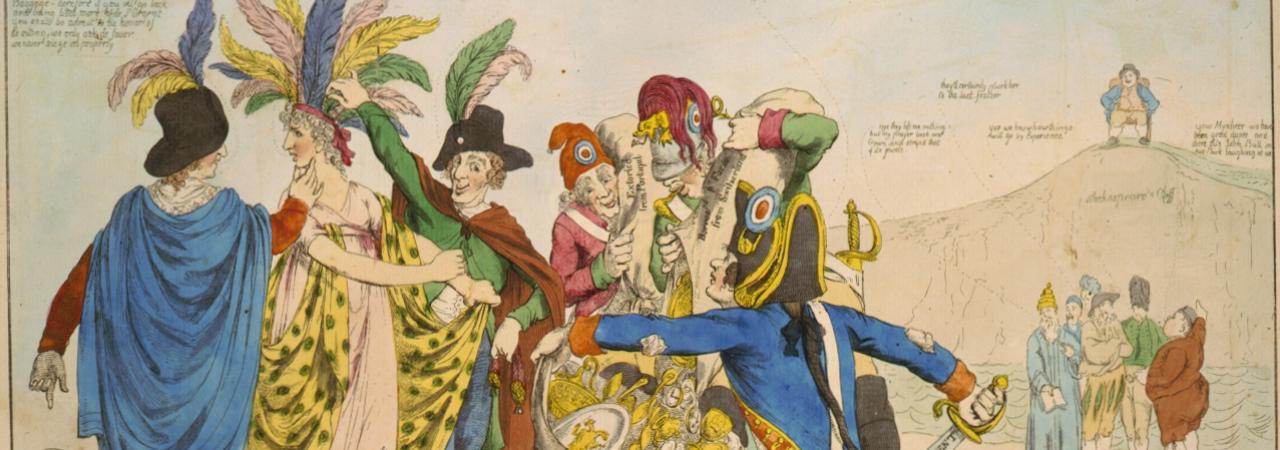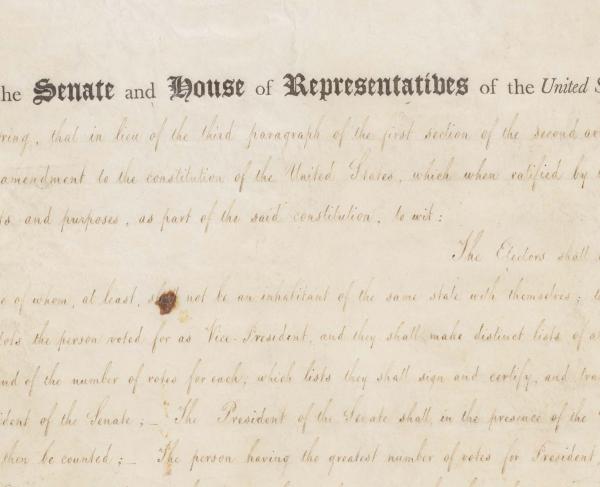The XYZ Affair

British political cartoon depicting the XYZ Affair. Published in May 1798, the cartoon depicts Frenchmen plundering "America," depicted as a female woman.
In the dawn of President John Adams’ presidency, a diplomatic situation unfolded with the former Revolutionary War ally of France. France itself was in the midst of its own revolution. With the decapitation of King Louis “Capet” XVI and Marie Antoinette in January of 1793, the monarchy was no longer the head of state. Throughout 1793, a bloody Reign of Terror echoed throughout France. Many more decapitations of supposed “reactionaries” and anti-Republic individuals, including a founding father of the French Revolution itself, Maximillien Robespierre, were killed. The French “Directoire”, or Directory, took control of the First Republic of France in 1795. “Liberté, égalité, fraternité” was the reigning motto under France, promoting similar revolutionary values that the United States made a little over a decade ago. However, despite their similarities in ideologies, the United States and France were unable to agree on certain matters of foreign relations.

In 1794, the United States and Great Britain signed Jay’s Treaty of 1794. The treaty averted war with Great Britain, as well as promoted trade with the two countries. The French, in response to the treaty, began intercepting American ships. As the crisis escalated, President John Adams sent an American diplomatic commission consisting of Charles Cotesworth Pinckney, John Marshall, and Elbridge Gerry in 1794. They were sent to prevent a possible war with France, as well as find a reasonable agreement between the two nations. The American diplomats arrived in France in October of 1794 and met with associates of Charles Maurice de Talleyrand, France’s foreign minister. They were Nicholas Hubbard, Jean Hottinguer, Pierre Bellamy, and Lucien Hauteval. The associates of Talleyrand explained that Talleyrand would meet with the diplomats under a set of conditions. They wanted the United States to forcefully provide France with a low-interest loan of $10 million United States dollars, pay American merchant claims against the French, pay a $250,000 United States dollar bribe to Talleyrand himself, and formally apologize for John Adams’ comments that were made against France. The American diplomats were shocked and declined the conditions set forth by the associates. Talleyrand, therefore, refused to meet with American diplomats until the conditions were satisfied. Over the next month, the American diplomats would not meet with Talleyrand. The only means of negotiations were through informal means. The American diplomats refused to see the informal negotiators and wanted official negotiations. Some months later, the diplomats made a negotiation offer similar to Jay’s Treaty of 1794. The French did not accept the terms, and expelled John Marshall and Charles Cotesworth Pinckney. Gerry stayed in France and was told that if he were to leave, the Directory would declare war on the United States. After Gerry’s fellow diplomats left France, he began to refuse to meet with Talleyrand. Gerry wrote to members of higher authority within the French government asking to meet with them. In October 1798, Gerry returned to the United States empty-handed, nervous about an impending war.
Back in the United States, John Adams was pressured by his cabinet to declare war, strengthen the U.S. Army, and construct naval vessels against the French. Adams refused and believed that, ultimately, peace was the reasonable option. Letters of the situation in France arrived. Adams kept the correspondences a secret, rousing suspicion of secrecy in his cabinet. The cabinet demanded that the dispatches between the two country’s diplomats be made publicly available. After some time, Adams released the papers. However, the men’s names were redacted. The letters W, X, Y, and Z were used to hide their identities. Thus, the affair was called the XYZ Affair. After reading the letters, many in Washington and Philadelphia called for war against France. Anti-French sentiments raged throughout the states. Many Americans refused to believe that the benevolent ally of the Revolutionary War would declare war on the United States. Adams, under his cabinet’s pressure to do the opposite, refused to ask Congress for a declaration of war. Despite Adams’ refusal, Congress requisitioned twelve frigates and made other preparations for war. On July 7, 1798, Congress nullified the Treaty of Alliance with France from 1778 and allowed American naval vessels to attack French warships.
Back in France, Talleyrand realized his failure to promote peace and liberty with the United States. He made attempts to restore relations. United States Congress approved for another diplomatic commission to be sent to France to officially come to an agreement with France. However, a pacifist Quaker, known as George Logan, conducted negotiations as a private citizen. He returned to the United States and claimed that Talleyrand had good intentions. Congress passed the Logan Act, making unauthorized diplomatic negotiations a crime. Congress also passed the Alien and Sedition Acts, four acts that were passed that hampered foreign persons from obtaining citizenship and allowing the President to imprison and deport non-citizens who were deemed dangerous. The United States also began to assist Toussaint L’Ouverture in Haiti against the French, causing further tensions between France and the United States. The subsequent Quasi War with France lasted for two years. Largely a naval conflict, the Quasi War never became a large-scale conflict and remained within the confines of the seas. It ended with peace negotiations made by the self-crowned First Consul of France, Napoleon Bonaparte. The Treaty of Mortefontaine officially ended the Quasi War on September 30, 1800, reestablishing friendly diplomatic relations with the two countries. The treaty later helped in securing the Louisiana Purchase from the French three years later under Thomas Jefferson’s presidency.
The XYZ Affair was just one piece of the grander issue of a strained relationship with France. With the refusal of France’s foreign minister to meet with the amicable American diplomatic mission under a set of unreasonable conditions, the United States had little choice but to react the way that it did. The XYZ Affair was the first diplomatic blunder in the United States. Scandalous in both the United States and France, the XYZ Affair was a precarious affair that stemmed from one’s personal greed, with little regard for the greater good.
Further Reading:
- A Sovereign People: The Crises of the 1790s and the Birth of American Nationalism By: Carol Berkin
- The First War of the United States: The Quasi War with France 1798-1801 By: William J. Phalen


